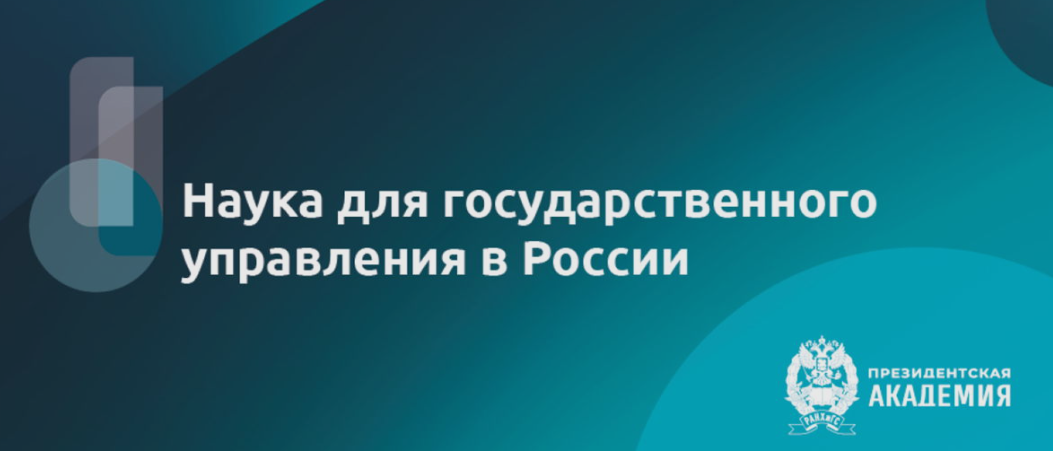Author's column
Статьи этого номера подводят своего рода итог прошедшего года и очередного этапа реформ научно-технологической политики. Каковы же промежуточные результаты?
Сегодня в РИНЦ индексируется 4300 российских научных журналов, их число ежегодно прирастает на несколько сотен – видимо, недалек тот день, когда у каждого российского ученого появится собственный журнал… Этому во многом будет способствовать предложенный Минобрнауки России критерий для аттестации научного сотрудника – «количество учрежденных журналов»… То, что большинству из нас читать некогда, потому что нужно больше писать, демонстрируют импакт-факторы 90% отечественных научных журналов, составляющие менее единицы.
Priorities for development of science and technologies
The article offers a calculation which demonstrates that the Russian share for research and development (R&D) in actual 2016 prices will equal not more than 0,8% from the global budget. With such indicators, Russia will descend from the 9th position, which she took in 2014, to 18th in the world ranking. With that, the number of staff working in the Russian R&D sector equals 10% from the global number of participants in R&D. Using international comparisons there has been given a quantifiable evaluation of US scientific-technological priorities. It is demonstrated, for instance, that every manager responsible for the state reserves expenditure on R&D in USA has an annual budget estimated in several billions of dollars which allows them to identify 3–4 priority projects with a budgets of 100–500 million dollars per year.
A suggestion is made that the incomparability of Russia’s internal expenses on development of the citizen’s sciences sector with those of other economically developed countries allows the identification of not more than 2–3 research areas for the country’s scientific-technological development priorities.
Economics of sience
EVALUATION OF SCIENTIFIC ACTIVITY’S EFFECIENCY
The article offers systematic criteria for assessing efficiency of researchers and decision-makers responsible for the expenditure of state resources invested in research and development. These criteria are suggested in drafts of normative acts developed by Russian Ministry of science and education and by Federal agency of scientific organizations in 2015.
The article provides assessment of the comparability of two suggested criteria within one category of indicators. There are developed a set of suggestions on how to form a system of unified and clearly read criteria, more adequate in relation with objectives for developing mechanisms for competitive funding of scientific-research and design and experimental inventions.
In order to increase the competitiveness of the Russian scientific-technological complex in the global environment, it is planned to increase competition through State funding, spent on research and development. This will allow the focus of investment resources on the most perspective ideas and projects of the most efficient scientists, communities and organisations. The article suggests that we will witness the widening of competitive forms of funding against the simultaneous and gradual cuts in the share of financing through State contracts.
One of the key criteria for evaluating the competency of team leaders and research applicants for State funding are measuring those who have «achieved high scientific results in concrete field of science», as a scientometric indicator, characterising their publication activity and citation rating.
The article provides evidence showing that evaluation of individual scientists and whole scientific communities based on their publication activity indicators and impact is limited and challenges the ability for targeted funding and transparency in the selection process for executive projects.
It is demonstrated that the share of meeting abstracts and proceeding papers accounts for 20% of publications indexed in Web of Science Core Collection. There has been carried out an evaluation of the Russian scientific community’s inclusion in generating publication flow, formed using meeting abstracts and proceeding papers, indexed in Web of Science Core Collection. It is demonstrated that the accumulative share of Russian conference content in the overall volume of documents of this type, indexed in WоS CC in 2014, equals 1,56%, which places Russia 15th in the world rating. The relative share of Russian meeting abstracts in the global cohort of WoS CC is 0,98% (22th in the global rating), and the share of proceeding papers is 2,32% (10th in the world). The article analyses the effect of publications from international conferences, held in Russia, on the national publication flow, indexed in WоS CC. Attention is drawn to the fact that more than half of international conferences, organized by Russian Academy of Sciences, do not fulfil their function in internationalising outcomes of fundamental research, completed in Russia.
It is concluded that such content as publications from conferences is poorly used by the professional Russian scientific community for translating new scientific knowledge and increasing the volume of national publication flow, indexed in international bibliometric databases.
ECONOMICS OF THE INNOVATION
Actual normative document
Express analysis
ISSN 2949-4680 (Online)

































